Fermented Food Recipes: Creative Enhancements
Nov 25,2019
Fermented Food Recipes: Creative Enhancements
Nov 25,2019
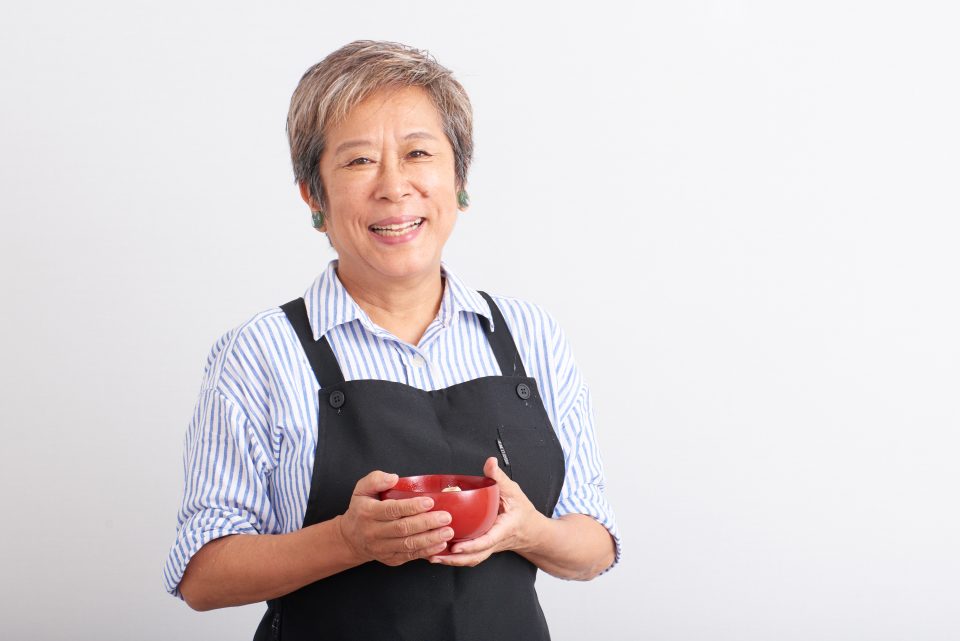

Fermented foods are gaining new respect these days. In Japan, salted koji (rice malt) and the old rice-bran pickling bed (nukadoko) are back in the limelight. But many people hesitate to try their hand at making fermented foods themselves, for various reasons. It can’t be easy, they think. They don’t have the right containers and other utensils. And they’re concerned about making more than they can eat.
Culinary expert Kijima Naomi has come up with a set of recipes that put such misgivings to rest. In July 2019, she published a cookbook entitled Fermented Food Recipes Made Easy—With a Plastic Bag!. Using a plastic bag has many advantages. It saves time and trouble, plus you don’t have to worry about making too much food or finding a place to store it.
We recently had a chat with Naomi, who says she has “a knack for making old-fashioned preserved foods.” She told us what makes fermented foods so special and shared her no-fuss recipe for making tonjiru or pork miso soup using a plastic bag.
Naomi is the daughter of another authority on food, Murakami Akiko, and she grew up with fermented foods from an early age.
“We had a rice-bran pickling bed at home from the time I was born, and every year my mother would pickle ume in the summer, then takuan (yellow pickled daikon) and napa cabbage from autumn to winter. She pickled them in this huge barrel. I helped her from the time I was little, but I was never aware that they were all fermented foods.”
Then it dawned on her that condiments like soy sauce, miso, mirin, and vinegar commonly used in Japanese home cooking were all fermented. Plus there’s been a fermented food craze in Japan lately. In the course of the miso-making and pickling classes she gives regularly, she came to realize that more and more people were becoming interested in making fermented foods themselves.

Culinary expert Kijima Naomi
“An affinity for fermented foods, I’m convinced, is in the Japanese DNA. Ethnic food or Italian cuisine is fine, but Japanese food is what we want to eat every day. And wouldn’t it be great fun if you could make time-honored Japanese fermented foods yourself? The problem is, the obstacles can seem formidable when it actually comes to doing so. You don’t have the right containers for pickling, say. Or with existing recipes, you’ll end with such a large batch you won’t know where to keep it all. I figured there must be a way to make smaller amounts with less fuss. Then I hit on the idea of using a sealable plastic bag.”
From that idea emerged her recent book Fermented Food Recipes Made Easy—With a Plastic Bag!.
The book contains a wide range of recipes. It tells you had to prepare traditional Japanese fermented items like miso, salted koji, and a rice-bran bed. It also features foods pickled in a fermenting medium made from fermented ingredients like sake lees, koji, soy sauce, or yogurt.
Naomi learned something new herself in the course of creating these recipes.
“I’d always made miso and rice-bran beds the traditional way in a huge container, so to be honest, I had to wonder whether using a plastic bag was even viable. But when I actually tried it, I discovered that the taste was more than up to snuff.
“The biggest breakthrough, I thought, was the kimchi. Homemade kimchi tastes great, but if you make it in the kitchen, the smell lingers for ages. But making it in a tightly sealed plastic bag solves the odor problem. From now on, I realized, you can just make however much you want when you want it.”

Naomi looking over the recipes in her book
Another feature of these recipes is their adaptability.
“The book contains recipes using seven different pickling mediums made from fermented foods: sake lees, koji, miso, soy sauce, mirin, vinegar, and yogurt. Each of the recipes featured is for a single dish: grilled chicken breast marinated in sake lees, for example, or mackerel cooked in miso, or liver and Chinese chives marinated in mirin and soy sauce. But after you’ve made the dish once and get the knack, you can replace the ingredients with whatever you like. You can use pork instead of chicken, say, or sardines or yellowtail instead of mackerel. That allows you to make many times the number of dishes included in the book.”
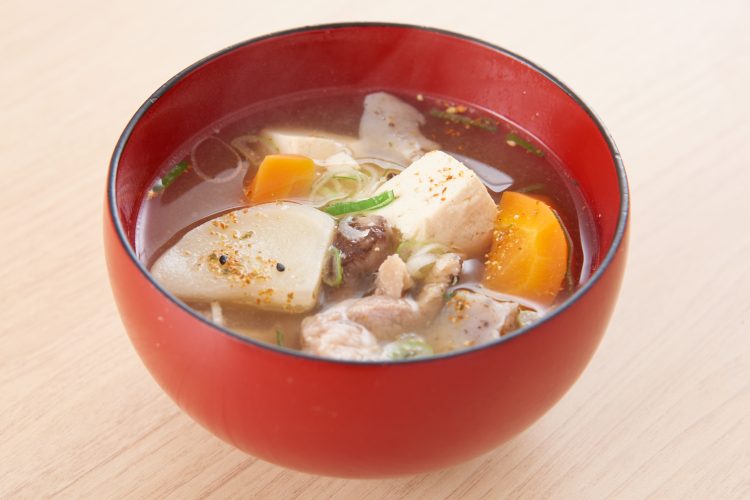
Naomi shared her fermented food recipe for chunky tonjiru or pork miso soup, which isn’t even in the book.
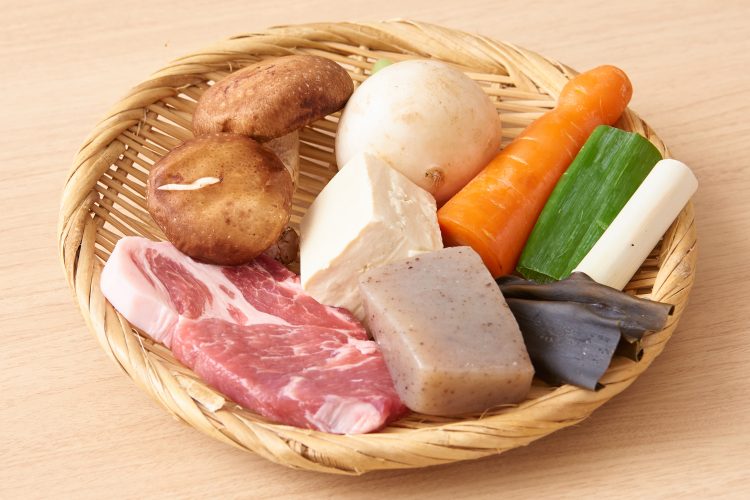
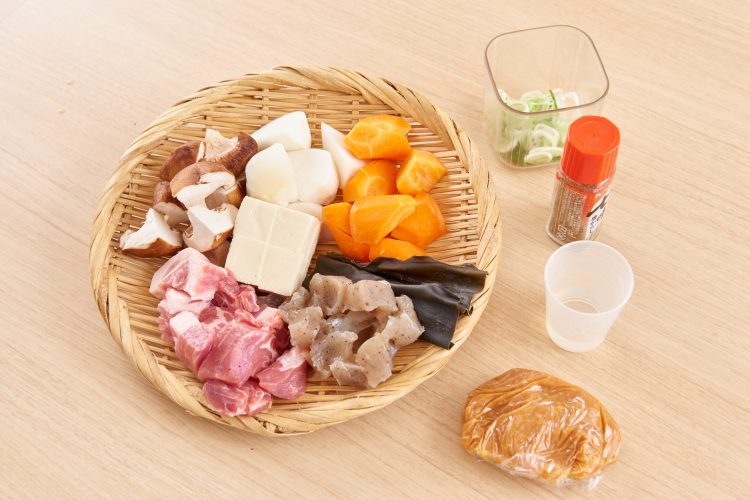
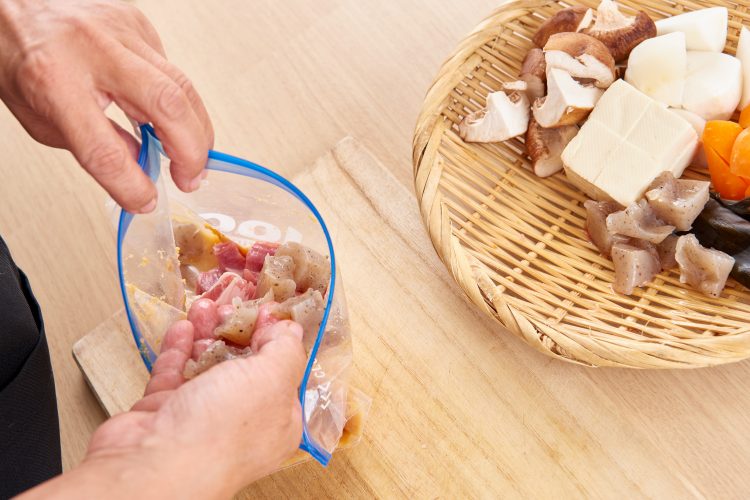
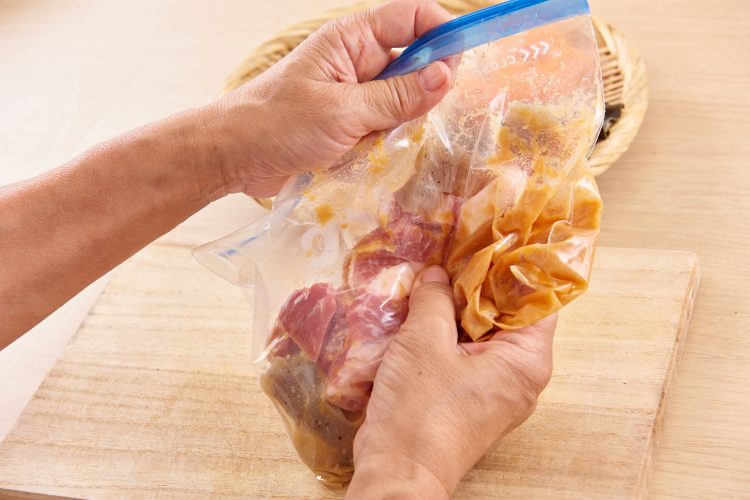
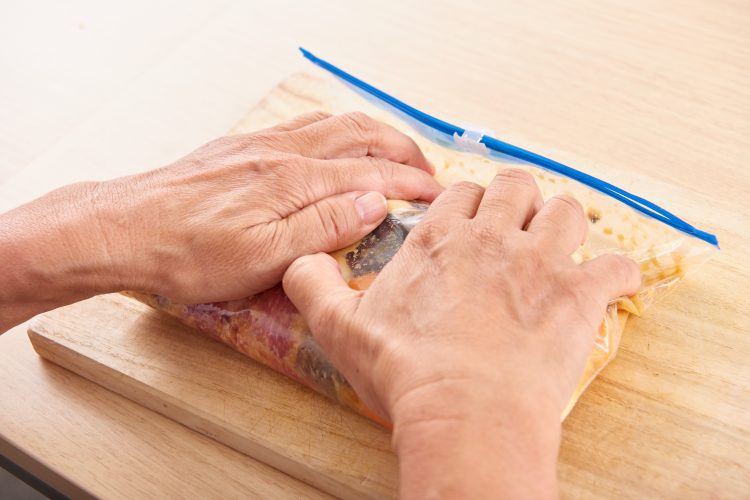
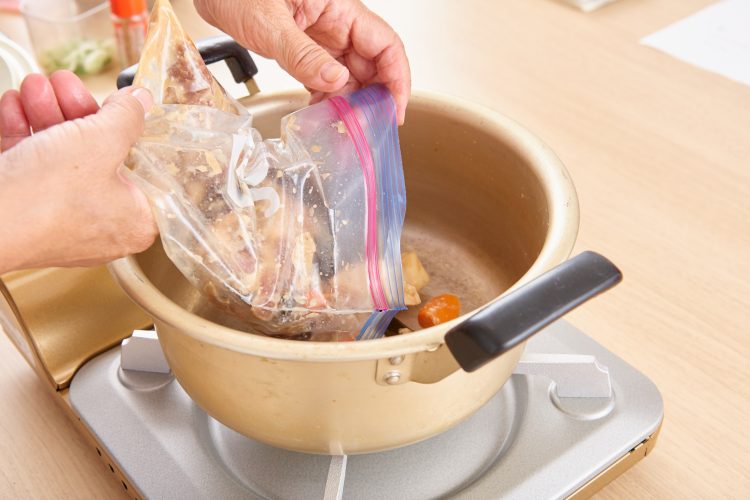

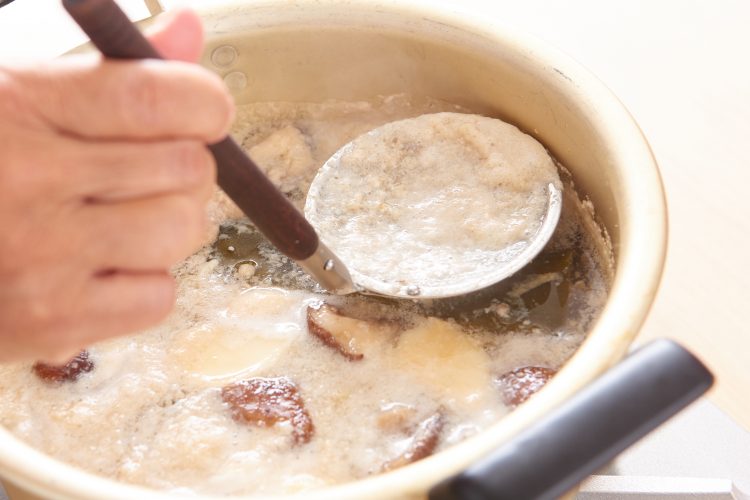
Tonjiru is typically made with thin slices of pork and daikon, but this recipe is made with a thicker cut of pork and turnip instead. There’s a reason for that, Naomi explains.
“One of the steps in making fermented foods in a plastic bag is placing the ingredients overnight in a pickling medium. Meat becomes over-flavored if the slices are too thin. That’s why it’s important to use a cut of at least a certain thickness and slice it into large pieces. And I used turnip instead of daikon because pickled daikon didn’t taste very good. It was a bit porous and bland. Then I tried using turnip, which worked like a charm.
“One caveat with this recipe is that a lot of scum forms on the surface during simmering, since you don’t prepare the ingredients before cooking. Carefully removing the scum is the secret to making the soup taste great.”
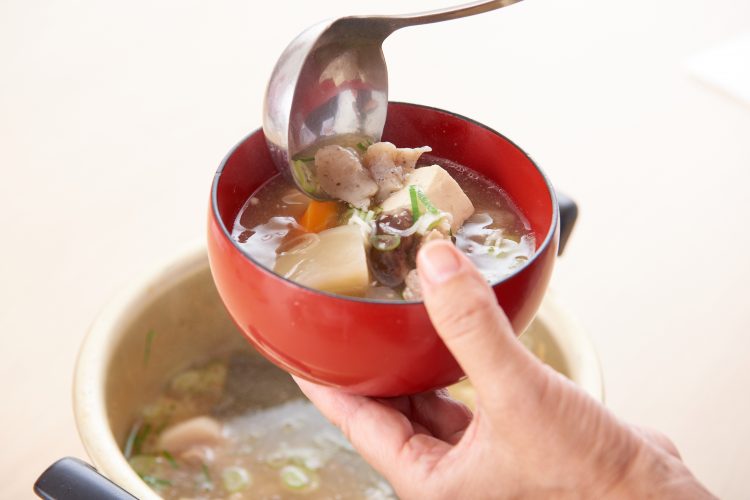
This chunky tonjiru has a mild taste that will suffuse your entire body.
“Simply adding kelp to the pickling medium gave the soup plenty of flavor, even without making dashi stock. Even I was amazed, and I’m the one who came up with the recipe! I used to make tonjiru at home the conventional way, but now I make it this way [laughs]. I think it’s only natural that methods of making tonjiru and other old favorites should evolve with the times. I hope that my book Fermented Food Recipes Made Easy—With a Plastic Bag! helps people discover new cooking techniques for the new era we live in.”
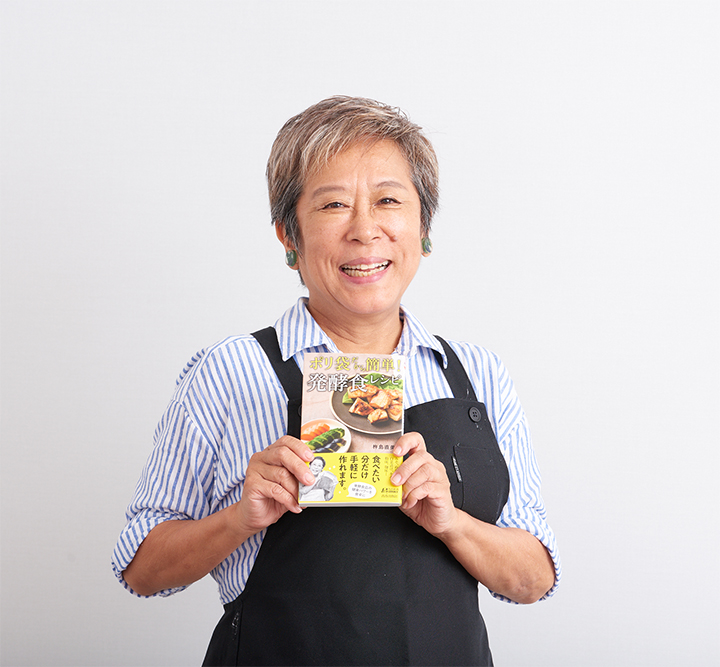
The daughter of cooking expert Murakami Akiko, Naomi has come up with many home-cooking ideas for today’s kitchen. Her guiding principle is “Fun to make, delicious to eat.” Besides giving cooking classes, she appears frequently on television and in print. Her recent book Fermented Food Recipes Made Easy—With a Plastic Bag! (in Japanese; published by Seishun Publishing) is now available at bookstores.